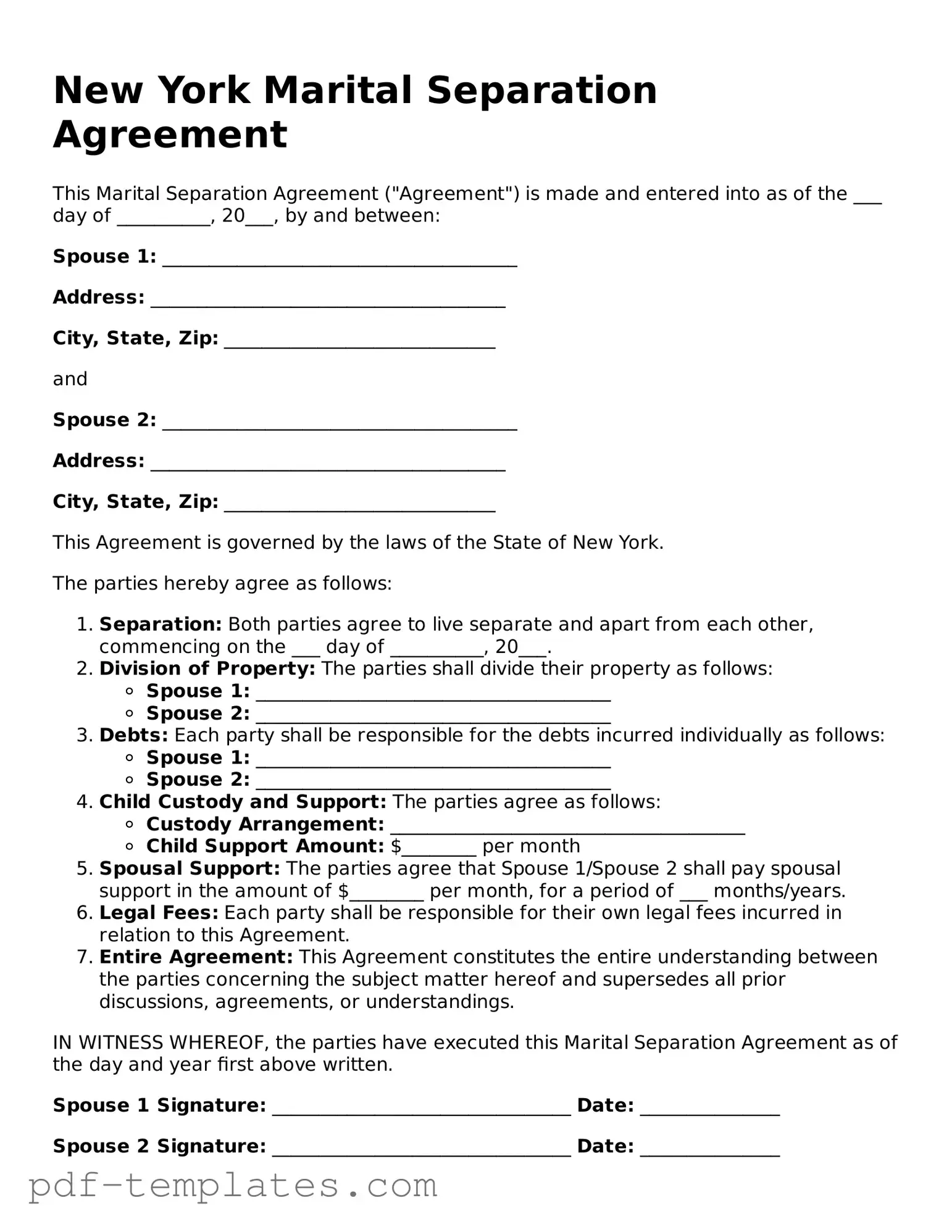The New York Marital Separation Agreement is often compared to the Divorce Settlement Agreement. While both documents outline the terms of a couple's separation, the Divorce Settlement Agreement is specifically tailored for couples who are finalizing their divorce. It addresses issues such as property division, child custody, and support obligations. In contrast, the Marital Separation Agreement allows couples to live separately without immediately pursuing divorce, providing a framework for managing their affairs during this transitional period.
Another document similar to the Marital Separation Agreement is the Separation Agreement. This document serves a similar purpose in various states, detailing the rights and responsibilities of each spouse while they live apart. It can cover financial arrangements, child care responsibilities, and other important issues. The key difference lies in the jurisdiction, as the Separation Agreement may be recognized differently depending on the state laws in place.
The Cohabitation Agreement also bears similarities to the Marital Separation Agreement. This document is typically used by couples who choose to live together without being married. Like the Marital Separation Agreement, it addresses financial arrangements, property rights, and responsibilities. However, the focus of a Cohabitation Agreement is on the rights of unmarried partners, making it distinct from the issues addressed in a marital context.
When navigating the complexities of trailer ownership, utilizing a formal document can be crucial. A Trailer Bill of Sale serves as a significant tool to clarify ownership transfer, ensuring all parties have a clear understanding of the transaction. For those looking to create or understand this important form, more information can be found at https://documentonline.org/blank-trailer-bill-of-sale, which provides a template to assist in this process.
A Prenuptial Agreement is another related document, although it is used before marriage rather than during a separation. This agreement outlines how assets and debts will be divided in the event of a divorce or separation. While the Marital Separation Agreement deals with current circumstances, a Prenuptial Agreement is proactive, setting the stage for potential future separation or divorce issues.
The Child Custody Agreement is closely aligned with the Marital Separation Agreement, especially when children are involved. This document specifically addresses the custody and visitation rights of parents. While the Marital Separation Agreement may include provisions for child custody, the Child Custody Agreement focuses solely on the best interests of the child, ensuring their needs are prioritized during the separation process.
Another similar document is the Property Settlement Agreement. This agreement specifically details how marital property will be divided between spouses. It is often included as part of a divorce proceeding but can also be relevant in a separation context. The Marital Separation Agreement may encompass similar topics, but the Property Settlement Agreement is more focused on the distribution of assets and liabilities.
The Parenting Plan is yet another document that complements the Marital Separation Agreement. This plan outlines how parents will share responsibilities for their children after separation. It includes details about education, healthcare, and day-to-day parenting. While the Marital Separation Agreement may touch on parenting issues, the Parenting Plan is more comprehensive, ensuring a structured approach to co-parenting.
Lastly, the Alimony Agreement is another document that can be similar to the Marital Separation Agreement. This agreement specifies the terms of spousal support payments, including the amount and duration of payments. While the Marital Separation Agreement may address alimony, the Alimony Agreement focuses specifically on financial support, ensuring that both parties have clarity regarding their financial obligations during and after the separation.
